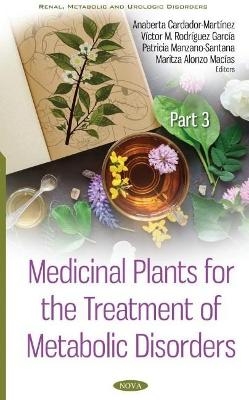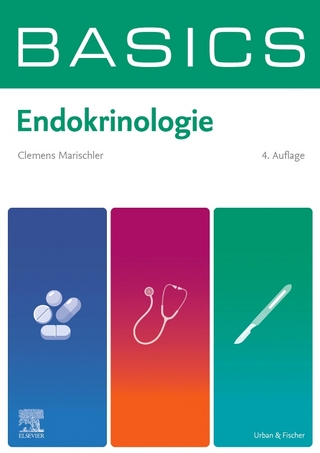This book provides a complete review of multiple metabolic disorders and the use of phytochemicals for their prevention and treatment. When describing each metabolic disorder, all authors describe the main health alterations, providing the most current figures and statistics worldwide; medicinal plants used in traditional medicine for its treatment and scientific information related to their potential to prevent or treat each condition. Authors also include a complete scientific background check, comprehensive analysis of all phytochemicals recommended for each disorder, a description of the mechanism(s) of action and in vivo and/or in vitro studies. Within this volume, a series of 7 plant species, recommended to treat or prevent the previously described disorders, are presented with their botanical information, traditional use in different cultures and countries, and the available scientific information validating their health benefits. Besides, six main metabolic disorders are described, providing a full scientific background for its general understanding, and three study cases are presented, where metabolic disorders are analysed and approached from different medical and pharmaceutical angles. Chapter 1 -- Soybean contains a great nutritional value, which makes it an excellent food for the human diet. It has large amounts of protein and lipids and also provides fibre, calcium, iron, zinc, and several vitamins. For these reasons, the possible benefits of soy consumption for human health have been studied. Although the results obtained to date have not been conclusive, thanks to its high content of isoflavones (phytochemicals with estrogenic activity), soy is attributed with anti-inflammatory, antioxidants and antifungals properties. Moreover, soybeans could provide significant benefits to patients with cardiovascular diseases, cancer, or diabetes. Chapter 2 -- Oil, proteins, vitamins, fibres, and phytochemicals present in the avocado plant have shown the excellent capability of not only addressing the prevalence of these metabolic diseases but also being safe and having minimal side effects. The general objective of this book chapter is to review the bioactive compounds and their action to promote health benefits in the prevention and management of metabolic disorders. Chapter 3 -- Heliopsis longipes roots, which contain affinin, has been used in traditional cuisine as a spice for its pungent. Due to its tingling and numbing properties, it is frequently applied to heal diverse pains such as toothache, earache, and headache. Within this chapter, its applications on anti-inflammatory activity, local anaesthetic, analgesic, anti-mutagenic, and antioxidant activity, will be reviewed. Chapter 4 -- The species Opuntia ficus-indica (L.) Mill., represents a good source of nutrients and antioxidants in the diet of consumers. This chapter aims to offer a simple and economical alternative formulation of artisan conserves prepared with nopal, in which the antioxidant activity was evaluated. Chapter 5 -- Metabolic syndrome is known as a group of metabolic abnormalities that increase the risk of developing cardiovascular diseases and type 2 diabetes. The cost of health for companies is very high for workers who have obesity or metabolic syndrome compared to healthy workers. Metabolic syndrome is closely related to obesity, and this, in turn, is associated with a poor diet (high intake of carbohydrates and fats). This chapter explains the decrement of risk factors in workers of Young Living Ecuador Farm based on the Health Belief Model. Chapter 6 -- The objective of this chapter book was to analyse the evidence obtained by clinical studies reported by scientific literature. Clinical studies have employed different components or products of grapes, such as pulp, freeze-dried grape, extracts, wine, and a distinct dose of resveratrol, to demonstrate their biological properties against diabetes mellitus, hypertension, and obesity. Chapter 7 -- The main purpose of this chapter is to describe the analysis of whether glycated haemoglobin values could be used as a limit marker for earlier diagnosis of type 2 DM in overweight patients. This was a nonexperimental, analytical, retrospective, longitudinal study of 100 overweight patients diagnosed with type 2 DM. The study was carried out in 2014 at Teodoro Maldonado Carbo Hospital, Guayaquil, Ecuador. Chapter 8 -- Rosemary is classified not only as spice or ornamental but also as a medicinal plant. It is an important source of volatile and non-volatile compounds. The proportion of them varies in function of diverse factors as a region of growth, environment, extraction treatment, and others. Thanks to its composition, rosemary owners several properties such as anti-obesity, anti-diabetes, anti-cancer, among others, thus the importance of this plant over metabolic diseases is presented in this chapter. Chapter 9 - Agave has been used in traditional medicine as an aesthetic, anticonvulsant, antipyretic, urinary antiseptic, cathartic, cicatricial, and regenerative, diuretic, emmenagogue, and eupeptic. Agave extracts and derived agave products have been used to prevent several metabolic diseases, such as diabetes and cancer. However, more studies are needed to support these effects.
Preface; Soybean [Glycine max (L.) Merr.]: Health Benefits on the Treatment of Cardiovascular Diseases, Cancer, and Diabetes; Avocado (Persea americana): Phytochemicals and Health Benefits against Metabolic Disorders; Aztec Root and Its Use in Metabolic Disorders; Artisanal Formulation of Opuntia Ficus-Indica Preserves: Food Products as a Potential Source of Antioxidants; Nutritional Intervention in Workers of the Young Living Ecuador Farm to Reduce the Risk Factors Associated With the Metabolic Syndrome Based on the Health Belief Model: A Pilot Study; Use of Grapes, Grape-Extracts, and Resveratrol to Prevent Obesity and Diabetes; Glycated Hemoglobin as a Limit Marker for Early Diagnosis of Diabetes Mellitus in Overweight Patients (Metabolic Syndrome); Rosemary as a Treatment for Metabolic Disorders; Biological Properties of Agave and Derived Agave Products; Index.



